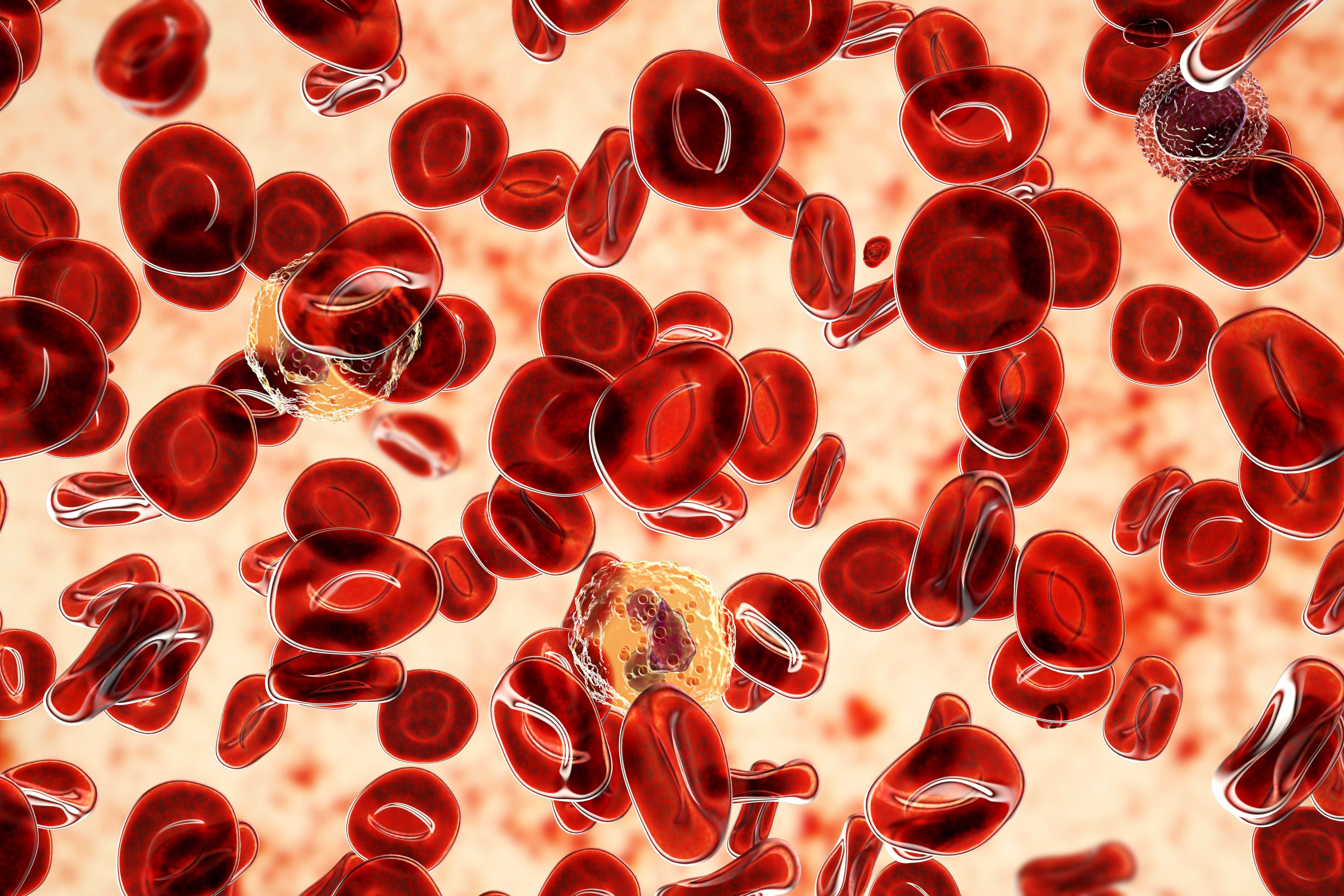News
Article
Blinatumomab Boosts Survival in MRD-Negative BCP-ALL
Author(s):
Adding blinatumomab to consolidation chemotherapy for B-cell precursor acute lymphoblastic leukemia (BCP-ALL) in patients without measurable residual disease (MRD) led to improvements in overall and relapse-free survival.
Adding the bispecific T-cell engager molecule blinatumomab (Blincyto; Amgen) to consolidation chemotherapy may improve overall survival (OS) in patients with measurable residual disease (MRD)-negative remission from B-cell precursor acute lymphoblastic leukemia (BCP-ALL), according to a new study.
The findings could help improve outcomes in patients who faces a significant risk of relapse, even when induction and intensification chemotherapy result in MRD-negative status. The study was published in The New England Journal of Medicine.1
Overall, outcomes for patients with BCP-ALL have improved in recent years thanks to such innovations as immunotherapy and the assessment of MRD, explained this study’s investigators.
“Despite these advances, outcomes in adults with BCP-ALL are inferior to those in children, owing in part to the increased frequency of high-risk genetic abnormalities and to the toxic effects of high-dose chemotherapy,” they said.
In this analysis, half of the participants were assigned to receive 4 cycles of blinatumomab plus 4 cycles of consolidation chemotherapy, and the other half, consolidation chemotherapy alone. | Image Credit: Seventyfour-stock.adobe.com

Blinatumomab has emerged as one part of the solution for some patients. It is approved by the FDA for certain patients with CD19-positive BCP-ALL, including patients with MRD-positive status in their first or second complete remission. That approval was based in part on a 2018 study that found 78% of adult patients with MRD-positive BCP-ALL who were in hematological remission following chemotherapy had a complete MRD response to blinatumomab.2 Those patients also had superior OS compared with nonresponders, the authors found.
In the new report, they aimed to go a step further, examining whether blinatumomab had a beneficial impact even among patients in remission who were MRD negative.
The investigators identified 224 patients between the ages of 30 and 70 who had BCP-ALL and were MRD negative following induction and intensification chemotherapy. For the study, MRD was defined by fewer than 0.01% leukemic cells in the bone marrow on flow cytometry. Patients with BCR::ABL1 fusion were excluded.
Half of the participants were assigned to receive 4 cycles of blinatumomab in addition to 4 cycles of consolidation chemotherapy. The other half received consolidation chemotherapy alone. The investigators wanted to know whether blinatumomab affected both OS and relapse-free survival (RFS).
At a median follow-up of 43 months, the investigators found that patients in the blinatumomab group had superior OS at 3 years (85% vs 68%; HR, 0.41; 95% CI, 0.23-0.73; P = .002) and RFS at 3 years (80% vs 64%; HR, 0.53; 95% CI, 0.32-0.87).
“In this randomized trial, we found a significant improvement in overall survival among patients 30 to 70 years of age who had an MRD-negative remission of BCP-ALL and received blinatumomab plus chemotherapy in consolidation, as compared with chemotherapy alone,” the investigators wrote.
They said they chose an intentionally long follow-up in order to elucidate a potential benefit because patients who are MRD negative already had a superior prognosis compared with MRD-positive patients. In addition, they said patients younger than age 55 had the most pronounced benefit from the addition of blinatumomab (the median age of participants was 51 years).
In terms of safety, the authors noted that 23% of patients in the blinatumomab group reported a grade 3 or higher neurologic or psychiatric adverse event compared with 5% in the chemotherapy-only group. That finding is in line with previously reported safety information.
References
1. Litzow MR, Sun Z, Mattison RJ, et al. Blinatumomab for MRD-negative acute lymphoblastic leukemia in adults. N Engl J Med. 2024;391(4):320-333. doi:10.1056/NEJMoa2312948
2. Gökbuget N, Dombret H, Bonifacio M, et al. Blinatumomab for minimal residual disease in adults with B-cell precursor acute lymphoblastic leukemia. Blood. 2018;131(14):1522-1531. doi:10.1182/blood-2017-08-798322




